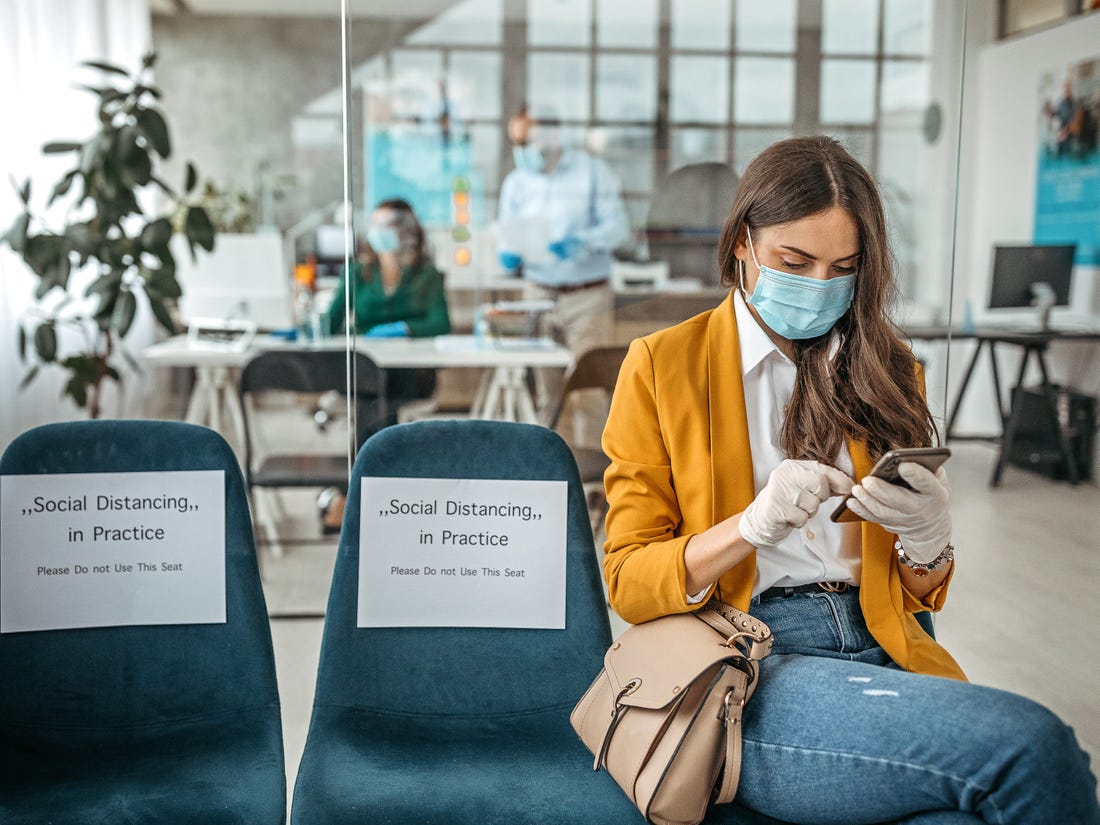As states and regions within the U.S. experience drops in coronavirus cases, some are beginning to allow businesses to reopen. If your company is one of the many preparing to once again open its doors, it’s crucial that you understand how to do so safely. Of course, gathering indoors will likely still be risky, but there are several precautions and safety measures you can take to mitigate the risk and keep both employees and customers safe.
Monitor Employees
Before welcoming potentially sick employees back into the office, mandate office-wide testing for COVID-19. Allow everyone enough time to find a testing center, complete the exam and receive their results before announcing when you plan to reopen.
Additionally, as employees begin to return to work, you might continue to screen employees. Regularly inquire as to whether they’ve been exposed to the virus and take everyone’s temperature as they enter the office or ask employees to self-report.
Require Masks and Distancing
It’s also a smart idea to require employees to wear masks. Have them bring their own cloth face coverings from home and be sure to keep a few on hand at the office in case anyone forgets theirs.
Additionally, to help people practice social distancing at work, you may need to rearrange furniture, separate cubicles and limit the number of people to an elevator. You might also spread out chairs in the break room and stagger lunch breaks.
Limit Occupancy
Keeping employees away from each other might also mean limiting building occupancy. Otherwise, people may begin congregating in the lobby or other areas while waiting to take the elevator, use the copier or get a snack from the office vending machine.
Minimize the number of people in the office at any given time by staggering shifts or having employees switch between remote and in-office shifts as you transition back to full-time office life.
Install No-Touch Devices
If your office relies heavily on touch devices like printers, shared screens and biometric fingerprint time clocks, you may want to replace them with no-touch devices. Use face recognition, Bluetooth, AirDrop and devices with gesture control instead. You might even replace traditional bathroom faucets with touchless ones and set up motion sensor sanitizer dispensers around the office.
This no-touch technology encourages routine sanitizing and prevents employees from touching germ-covered surfaces in the first place.
Improve Ventilation
Investing in indoor air quality is also important as employees return to the office. Since the coronavirus can remain active in indoor air for up to three hours, failing to properly ventilate could increase the likelihood of transmission even if employees are distancing and wearing masks.
To minimize the spread, divide ventilation systems to contain airflow in each room. The HVAC system should also continuously bring in fresh air from outside and flush out indoor air instead of recirculating it.
Disinfect Common Areas
Since droplets can also remain on surfaces for hours to days, you should be cleaning high-traffic areas frequently to mitigate the spread as well. Disinfect door handles, the break room, the lobby, vending machines and other commonly-touched surfaces on a routine basis. You could even assign employees cleaning jobs throughout the day to ensure everyone is aware of these potentially dangerous surfaces and that they’re doing their part in keeping them clean.
Enforce Safety Protocols
Once you have these safety protocols in place and have made everyone aware of them, it’s time to enforce the new policies.
Speaking up to someone who refuses to wear a mask or regularly disinfect their desk and hands may be uncomfortable at first. However, enforcing safety measures from the very beginning will show your employees that you consider safety a top priority. Yet, the only way to truly keep everyone safe is to get everyone to comply.
Have a Contingency Plan
Regardless of how much you prepare, clean and redesign the office, there’s still a chance someone will contract the virus. What will you do if someone gets sick? Full preparation means creating a contingency plan.
Decide whether you’ll require testing to prove if someone has COVID-19, if you’ll offer paid leave and how long they’ll have to avoid the office after recovering. You should also determine whether or not you’ll report employee cases to customers, especially if your clients frequent your office.
Consider Customers
Speaking of customers, if they visit your office space throughout the day, consider what precautions you might have them take before entering and how you’ll keep both them and your employees safe during transactions. For instance, you may require all customers to wear a mask or use a touchless payment system.
Likewise, employees may wear gloves when handling items from or for customers and stand behind a plastic screen while interacting with visitors.
Staying Vigilant
The pandemic has dragged on for months now, but the fight to stop its spread has only just begun. While it may be easier to let down your guard and disregard plans and protocol, it’s important you remain vigilant as your office and the rest of the world strives to find and implement safe solutions for returning to work.
This post is provided by Martin Banks who is the Founder and Editor-in-Chief of Modded. He covers the world of small business, startups, tech, and more.

